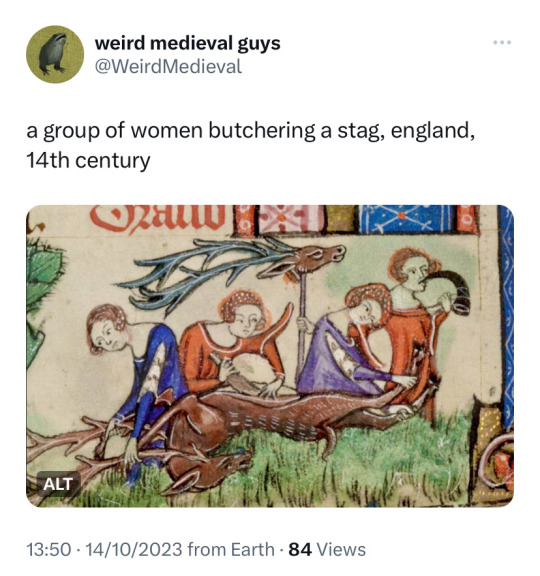#ancient hunting
Explore tagged Tumblr posts
Text
Food for Warriors.
As I mentioned in my last post, I wanted to break down the contributions to the mess in a way that would include more general information about the diet of Ancient Spartans, and by extension, the agriculture of the region. Yes, these are only details in a much bigger picture, but what is more important to we humans than the fuel that sustains us?
Cartledge, in his regional history of Lakonia (to which this post is heavily indebted), writes that Lakedaimon ‘…constitute[s] one of the most fertile and desirable pieces of land in all southern Greece. Soil, climate and man conspire to yield and garner sometimes two harvests of grain in a single year.’
To reiterate the contributions required, as listed by Plutarch:
‘Each member of the mess would contribute every month a medimnus of barley-meal, eight choes of wine, five minas of [goat or sheep] cheese, five half-minas of figs, and in addition a small sum of money for fish or meat. Besides, anyone who had made an offering of first fruits or had been hunting sent a share to the mess.’
So let’s break that down a little.
Barley and Wheat:
“a mediminus of barley-meal…”
Until the fourth century BCE, Barley was widely preferred to wheat in Lakedaimon. This may have been due to technological disadvantages over other regions but was undoubtedly also basic taste. By the fourth century wheaten loaves were being contributed to the mess, though it was noted by Theophrastus (early fourth century BCE) that the Lakedaimonian wheat was particularly light.
A mediminus (73 or 74 litres) of barley per month was much greater than the living ration for a single male, at least if we base our workings on what was provided to the men on Sphakteria in 425 BCE. The expected contribution annually (82 medimini) might have fed up to 6 or 7 men.
The surplus was either eaten by the citizen’s oikos (household) or put into a public store. I personally favour the theory of a public store, as the boys in the agoge were provided a small ration which had to come from somewhere.
There’s also the possibility that teachers might have required reimbursement, provided they came from outside Lakedaimon - a theory put forward by Ducat which I strongly disagree with. I see absolutely no reason why the tutors wouldn’t also be Spartans and part of the system - which seems logical for many reasons...
Anyway - I’m getting sidetracked. Ducat’s ideas do this to me. 😅
There is no information on how the grain made it from field to mess, but there may have been a central mill at Alesiai, called the Grindings.
Grapes:
“…eight choes of wine…”
Both Lakonia and Messenia have the right conditions for viticulture, though Messenia is particularly suitable. They’re a labour intensive crop and require greater control of the conditions than other crops.
Five ancient vine growing districts names are known: Oinous, Dentheliatos, Karystos, Onoglos and Stathmis. These districts, where these can be located, are in perioekic territory though, rather than Spartan lands.
I have tried and failed to discover how much ‘eight choes’ is in modern measures.
Goats and sheep:
“… five minas of cheese…”
Goats and sheep were grazed on the stubble following harvest or on the terrain between the arable land (which makes up ~ 20% of Lakedaimon), and the totally barren mountains.
It has been argued that Messenia was turned over from grain production to pasturage for goats and sheep after it was conquered, so we might imagine the Messenian helots as shepherds rather than strictly farmers. They did still have crops though, as attested from multiple instances of burning fields during raid by Athenians in Thucydides.
Besides the contribution of cheese, the goats and sheep would have provided skins, wool or mohair, animal fat, and to a minor degree, meat.
Figs
“…five half-minas of figs…”
Figs in this part of the world have two harvests a year. The first crop in June-July is eaten fresh, while the second in August – October is dried.
They probably required irrigation of some kind, though Aristophanes refers to the small size of figs from Lakedaimon, so perhaps not.
Foods not on the Contributions List:
The Lakedaimonians were the first people in Greece to anoint themselves in olive oil for exercise, which suggests an abundance of it from an early date. There is no question that olives were eaten throughout the Classical period.
As far as vegetables go, Theophrastus mentions lettuce and cucumber. Legumes were the food of the common-man, and might be made into a porridge of mixed pulses - perhaps pea, lentil, lupine and vetch.
As for meat and animal products:
There was honey, of course, from as early as the eighth century onwards.
They were famously very fond of black broth, made from pigs' blood. This was a Spartan delicacy.
Migratory quails were perhaps netted at the foot of the Tainaron and Malea peninsulas, while chickens provided meat and eggs.
Fish was probably caught by perioikoi then sold to the Spartans, who are attested eating it in the mess - though I have to say, I like the idea of Spartans having a day fishing on the banks of Eurotas with spears - even if there’s no evidence whatsoever to suggest this happened.
The below image is the interior of a Lakonian cup from the seventh century BCE showing a scene purportedly of Cyrene (modern Libya) but surely drawn from the world around the artist in Lakedaimon. Note the nets, presumably for fishing.
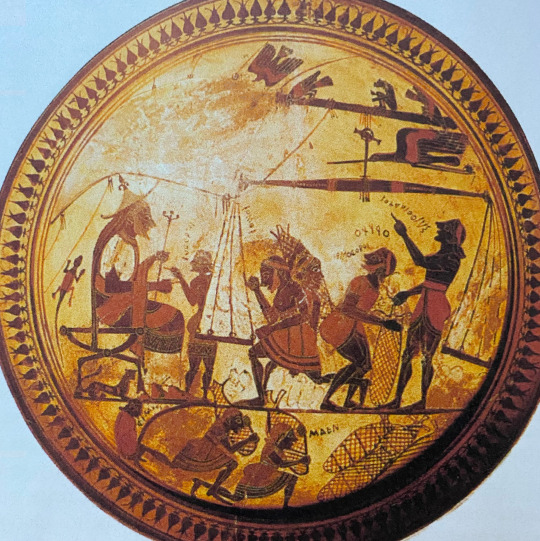
Finally - Boar, hare and dove were definitely hunted by Spartans - which brings us neatly to the final heading of this post.
Hunting
Cartledge suggests a very specific hunting ground for the Ancient Spartans:
‘Central Taygetos seems to have been largely uninhabited in antiquity, when it was used by the Spartans as a hunting-ground.’
He goes on to explain that this was the region known as Therai, on the lower eastern slopes of the central Taygetos.
As per the above, they hunted hares and ringdoves, but the main prize was the boar, and it is fairly certain that this activity was at least sometimes considered religiously significant, perhaps as a coming-of-age activity related to Artemis Orthia.
I’m going to share this bowl yet again (but at least a different photo) because it shows a boar hunt in progress, with the younger man wearing a pelt stained with blood - suggesting this is a ceremonial activity. The boars are visible on the right.
(I also like the idea that the fish at the bottom is a suggestion that fish might also be hunted - but that may just be me dreaming again.)

A few final notes around hunting that I find interesting:
They hunted with javelins, spears and perhaps nets. They were notoriously opposed to bows and arrows.
They had a special breed of dog for hunting, the Lakonian hound, which were good scenters.
Horses, dogs and provisions were made available on demand to all Spartans when they were going hunting, though horses were probably owned only by the rich.
Being back late from hunting was one of only three valid reasons to be absent from the evening mess meal.
Here’s a Lakonian Hound to see us out (c. depicted in 500 BCE by the Euergides painter.)
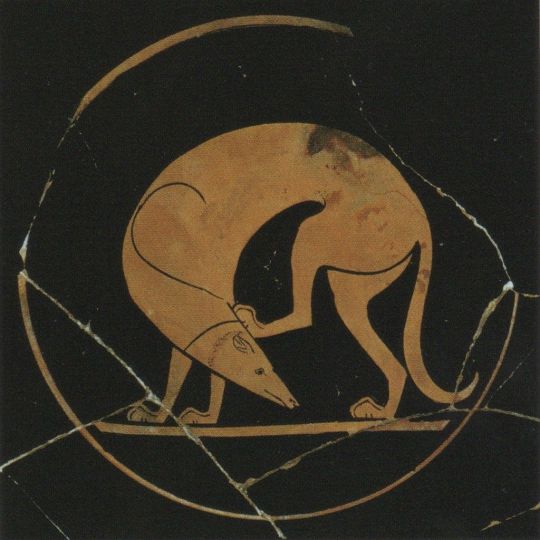
#spartans#ancient greece#ancient history#ancient greek#ancient sparta#spartan history#ancient greek history#ancient greek food#hunting#ancient hunting#history#long post
14 notes
·
View notes
Text
My FINAL Artemis x Aeolus fa...(My EPIC designs-Y'all really made me do this...)

(you'll see Artemis's antlers if you get pumba off her head ig 😭, I just didn't wanna draw a dead dog or fox on her....)
#help this ship is SO random??!?!?#epic the musical fanart#etm#odyssey#aeolus#artemis#goddess of hunt#wind breaker#epic the musical#epic the ocean saga#sapphic#gay#i love drawing gorgeous women somebody help#greek goddess#artists on tumblr#ancient greek#greek gods#rarepair#ibispaintdrawing#i cant do this#somebody help me come and give me a sign#too many tags#beauttiful girls#ibispaint art#art#ancient greek mythology#ancient greece#slone asks#hunting goddess
3K notes
·
View notes
Text


my second favourite fraternal twins 💜💛
Artemis’s skin came out looking like a nebula and i can’t say im upset about it
Notice anything about her freckles tho? 👀
#artemis#apollo#goddess artemis#god apollo#greek gods#ancient greek#greek mythology#greek myth art#fraternal twins#artemis and apollo#goddess of the hunt#goddess of the moon#god of music#god of the sun#god games#epic odyssey#epic musical#epic wisdom saga#epic apollo
916 notes
·
View notes
Text



TWST x adventure time: pomefiore
umm i’m very late but enjoy?
#twisted wonderland#twst#twst at#vil schoenheit#epel felmier#rook hunt#my art#vils true form should actually look way older like absolutely ancient#epels coat was originally blue but he looked like paddington rip
2K notes
·
View notes
Text
Poison Ivy's little sprout
Ivy just got back to her main base after a lil three month fun vacation with Harley and Cat women. Only to see her giant plants seemingly a foot or two away from one lil growing pod sprout literally shaking as if the Fear of God was put into them.
Now she doesn't remember planting this lil bud, it was sickly green in the leaves and steam, the pod itself seem to be glowing blue that the size of a peach. The chaotic maddening whispers from the plants around her wouldn't even come close enough to where she stand right in front of the lil sprout.
They seem more afraid of this lil plant then the last time Harley accidentally brought her an invasive species plant that sass the hell out of the other plants until she secretly relocated it away.
She grab her plant shovel and replant it into a slightly bigger pot, picking it up and walking toward her lab part that didn't had much plants there, considering the big plant babies immediately took over the previous place where that tiny plant was and inched away from where she was walking to.
Maybe it was sick, with how pale and bright green the plant was and whatever fruit was growing was sucking the literal life out of the plant. She could probably add some extra nutrients and plant fertilizer to help it grow until it was ripe to be plucked. Watering it with enough to last the week after putting extra fertilizer.
Taking just one tiny bud leaf since the silent was deafening coming from this plant was completely abnormal to her to a degree that something was very wrong or this plant was alien not from earth's native plants.
Weeks of research turned to months as she watch with pure heavy fascinating interest, seeing that the leaf she cut off turn into an unstable green goopy mess of dna not even an 15 minutes off the plant. It made Ivy wonder what kind of giant peach was growing from it with how it glow so bright purple yet ominous at night. Her lab never felt so cold yet the heater was on 79 degree for her plant babies.
It was by month of September that was a surprise, when Harley came over to help pick the super sized fresh vegetables and fruits off the other plants to maks chicken salads, not noticing that Harley took the large peach fully ripe from the plant she had been observing on.
She was chopping carrots up into bite sized pieces before Harley's voice spoken out.
"Um.. Ivy? I don't know where you got this plant from that momotaro movie, but I think you just grow a boy from a peach."
Ivy turned around immediately to see Harley looking rather shocked as well, with a peach juice covered sleeping baby boy lay in a half way peeled peach. A wet curly black hair with grey eyes that she know in her gut that it will turn blue later.
Oh no.. she caught the bat-bait disease.
"We're not keeping him." Poison ivy said sternly and sharp to steel herself from that sappy adorable puppy eyed look Harley was giving her.
🥺
"Harley, we don't even have-
🥺🥺🥺
"Har-
🥺🥺🥺🥺🥺
"...."
"One night and then it straight to the the good orphanage near the rich area." Poison ivy sighed, pinching her nose.
"Yessss!" Harley cheered, holding the baby up like he was simba.
It was only for the night, what the worse that could happen.
......
......
......
She was weak to that stare and she knew it.
Poison could only sighed, holding two month old Dara in the baby sling, staring sat which baby outfit to pick, the olive green that had the baby duckies or fern green with the adorable flower patterns.
(Thanks the commenters for telling me the original name. All Google gave me was the Peach boy or Jack and the Giant Peach XD)
#dpxdc#dc x dp#danny phantom#dp x dc#dp x dc crossover#dc x dp prompt#dcxdp#de aged danny#danny become a peach baby#danny is the ghost king#danny had a fight with undergrowth and undergrowth used an ancient spell that went haywire#sam has undergrowth in a choke hold because undergrowth honesty thought that plant had gone extinct and apparently not#phantom team is on a plant hunt#crashing illegal exotic and rare plants trafficking rings#poison ivy realizing that hanging out with robin has somehow infected her with tragedy orphan adoption obsession that bats got#she want a refund now but harley looking at her with those puppy eyes holding a juice covered baby to her chest#only for a day she say#2 months later she wearing a plant designed baby sling with baby dara in the grocery store
472 notes
·
View notes
Text

The goddess Arweny, depicted in Setem-Whe ornamental style. She is usually described as a female elowey protruding from the jaws of a gigantic serpent, or as a small snake with a rat perpetually stuck in its throat.
She is considered to be one of many local spirits of the wilds across the vast forested region known as Nekhuatseth, and is venerated (and cursed) as the god of the hunt-interrupted. She is believed to lend strength and speed to hunted quarry, allowing them to escape predation against insurmountable odds. She is completely impartial, and will lend her mercy to an insect just as easily as she would to a person.
Hunters blame her when what seems to be a certain kill escapes, and pray to her when they find themselves hunted. In many places, it is believed that she will hide all prey if she is not appeased, and as such is left offerings of fruit and wine before any expedition. It is common in rural parts of Nekhuatseth to wear amulets depicting her likeness to ward off attacks from wild beasts.
A folktale from the Sykhilic cult (a Nekh and Setem-Whe religious order devoted to a lunar goddess, scattered in temples at the edges of wilderness areas) intends to teach youths about the dangers and impartiality of the wilds, and illustrates beliefs about Arweny's intervention in the cycle of hunter and hunted.
A young hunter walked alone through the wilds in the heat of the dry season. They were on their rite of passage, and as such were armed only with a knife and could feed only on what game and forage they found on their journey. They were three days in, tired and hungry and missing the comfort of the city more and more with every step.
The hunter stopped at the edge of a clearing to eat a few clumps of dry, tasteless grass. They chewed miserably and dreamed of the great feast that would be held upon their return, when they heard a sudden snap. The youth had only a moment to turn before a great beast seized them in its claws. A tyger had been stalking them, and now pinned them to the earth under one massive paw!
Thinking fast, the young hunter called upon one of the wild gods of these parts.
“Arweny! Rat-Who-Chokes-The-Snake! Please, lend me your strength!”
And there was a great rustling in the bush, a sliding, slithering sound, and a cackle of frightful laughter. And the hunter felt every muscle in their body seize with a great strength, and they wrenched themself out of the stinking cat’s grasp.
The youth scampered up a tree and sat in its high boughs with their breast heaving. The cat paced below in helpless agitation, for the branches were far too lithe to support its great weight.
The great beast stalked away, and the hunter cried out their thanks to the lord of the triumphant prey and nursed their wounds.
The young hunter walked along deer trails all day, but there was no quarry to be seen, and the scents were weeks old and unpromising. With hunger now gnawing painfully at their gut, they came upon a great river. There were water lillies growing in the shallows with thick, tasty bulbs, and the air was alive with frogsong. The youth crept out into the muddy water, hoping to find something good to eat.
But a slight ripple on the water filled their gut with ice. Their instinct told them to be afraid, and in the fraction of a second, they whispered, “Arweny, lord of the hunt-interrupted, lend me your speed.”
And in that same moment, a colossal riverdrake sprang forth from the murk, faster than the hunter could have run. But their body was seized with a great quickness, and they leapt into the air, high above the drake’s head, and came down upon its jaws, forcing them shut with a snap!
As they sprang away from the beast, they heard a wet slithering sound, and that same cackle of triumph. They silently thanked the lord of the biting quarry, and ran far from the river and its dangers.
But now, the hunter was near starved. The small insects and dessicated grasses they had found along the way did little to abate their hunger. They needed to make a kill or they would surely starve.
And as if by divine will, they came across a river hog hopelessly tangled in a thorny mass of dead vines. It squealed and strained with all its might, but to no avail. The hog collapsed to its side and laid still, chest heaving and showing the terrified whites of its eyes. The hunter sighed in relief and drew their blade.
And suddenly, the hog trembled and burst away, ripping up and dragging all the vines along with it! The hunter was frozen in shock. How was this possible? The hog was as good as dead!
And as if to answer that question, they heard that same slithering, the sound of something heavy dragging its long body over the dry leafbed. And they heard that same cackle, a laugh of triumph, as the prey fled and the hunter starved.
#arweny#nekhuatseth#blightseed#This is a rehash of some really old shit#META: Arweny is an actual living god and was once a companion deity to Hai-Taihe#She is far more powerful (as she is widely known and worshipped) but also consequently more immaterial and rarely ever seen#edit: fucked up my own lore and wrote 'Sethym' instead of 'Setem-Whe'#The Sethym were an ancient culture of this region that is now functionally extinct and the Setem-Whe are contemporary people#Both the Setem-Whe and Nekh are descendents of the Sethym#Arweny is the remains of a Sethym hunting god (though these connections are not directly known)#The spear Arweny is usually depicted with is a remnant of her former self
461 notes
·
View notes
Text
the transition between the tango of last season's opinions of wardens (treated them largely like very disappointing cats) and. this stream ("I didn't know it would spawn more than one!" "I don't know how to get past them" "I didn't bring any wool :(")...........incredible.
#stream liveblogging#he is ONLY good at warden wrangling for minigames#for hunting ancient city. scary :(
455 notes
·
View notes
Text
Don't you guys find it incredibly poetic how Odysseus got wounded and scarred by a boar and ended up having a perfect field chemistry with Diomedes who is a descendant of a person known to be associated with the symbol of a boar?
Food for thought
#greek mythology#odysseus#tagamemnon#diomedes#odysseus and diomedes#diomedes and odysseus#odysseus of ithaca#diomedes of argos#tydeus#boar#ancient greek boar hunts#food for thought#trojan war#heroes of the trojan war#the iliad#homer iliad#homer's iliad#homeric poems#homeric epics#epic cycle#homer#the epic cycle#thoughts from the void
151 notes
·
View notes
Text
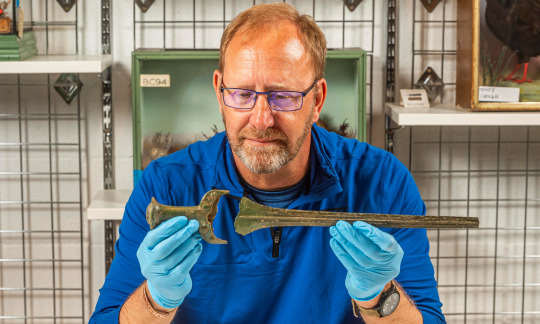

Detectorist Unearths Bronze Age Hoard After Getting Lost on Treasure Hunt
John Belgrove, 60, uncovered rare sword, axe head and bangle in Dorset after becoming separated from group
An amateur detectorist has described how he unearthed a bronze age hoard, including a rare sword, after getting lost during a treasure hunters’ rally.
John Belgrove, 60, became separated from the main group of detectorists and headed to higher ground to try to spot them when he made what he has called the find of a lifetime.
His device activated as he walked along and when he dug down he uncovered a rapier sword dating back to the middle bronze age.
The 61cm (2ft) rapier had been deliberately broken into three pieces and placed in the ground.
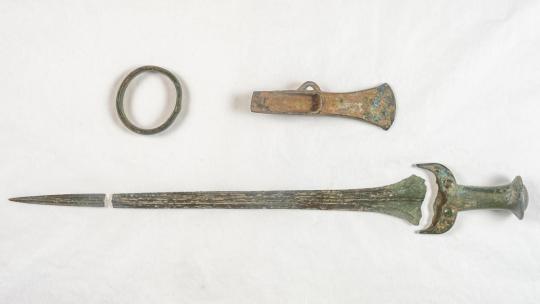
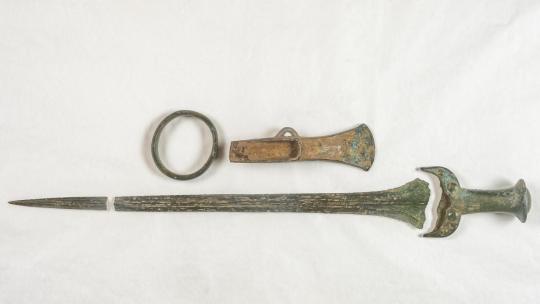
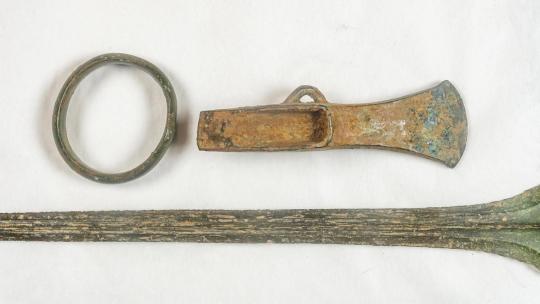
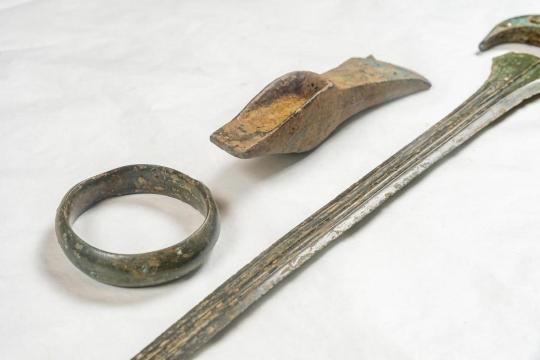
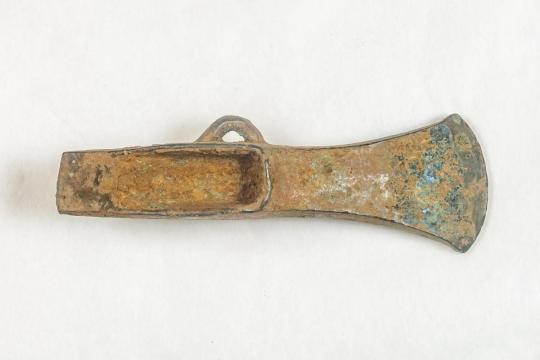
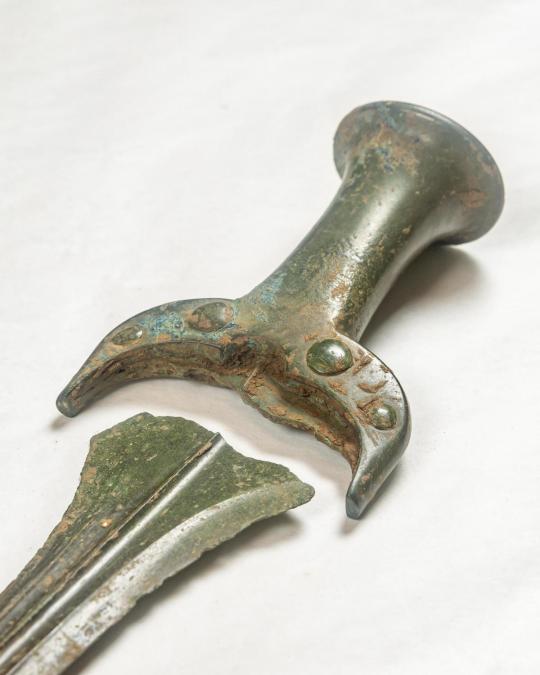
Unusually, the hilt, though cast in bronze, was shaped to mimic a wooden handle. Only two similar rapiers have been found in Britain before and they were incomplete.
As well as the rapier, a palstave axe head and a decorative arm bangle were found, presumably buried as an offering.
Dorset Museum and Art Gallery raised £17,000 to buy the objects, with the proceeds shared between Belgrave and the landowner.
Belgrove, a retired pensions consultant from Purley, Surrey, made his find in the village of Stalbridge, near Sherborne, Dorset, in 2020.
He paid £20 to go on the rally on private farmland but became separated from the group.
Belgrove said: “There was a group of between 40-50 detectorists there and they had searched the land before but they were excited because some new land had been opened up for the rally.
“I tagged along and didn’t know anyone there. Somehow I got left behind and lost and so I walked to high ground in a field and that is when I got a strong signal for this find of a lifetime.
“It was clear there was metal there but I thought it would just be an old can or something. I dug about eight inches down and found an odd-shaped object that was caked in clay.
“I didn’t know what it was at the time but it turned out to be a solid hilt of a sword, an exceptional item.”
He then found the two broken sections of the blade along with the axe head and the bangle.
Belgrove said: “I knew when I saw the axe head that it was a bronze age hoard. My head was in a spin. The blade of the sword was still sharp. The view of the British Museum is that it was deliberately broken and deposited in the ground as part of a ritual burial and offering.”
Elizabeth Selby, director of collections at Dorset Museum, said: “This hoard is incredibly special. The rapier sword is really unusual because of the cast bronze handle. The bracelet decoration was quite unusual as well.
“There aren’t really any comparable objects like the rapier, so to be able to acquire these items is really important for us.
“Finds like this tell us about how people were travelling, meeting and exchanging ideas with others on the continent in the centuries before the Roman invasion.
“There was a farming community there and these people generated enough wealth to be able to barter for or exchange objects that others had made.”
By Steven Morris.
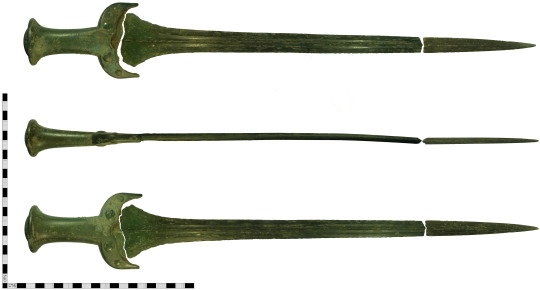

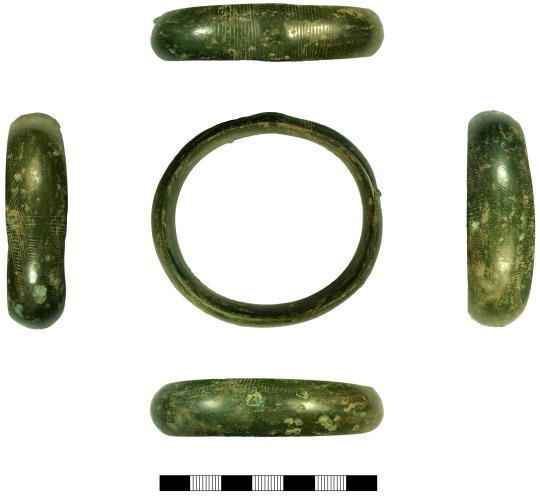
#Detectorist Unearths Bronze Age Hoard After Getting Lost on Treasure Hunt#bronze age hoard#Dorset England#ancient artifacts#archeology#archeolgst#history#history news#ancient history#ancient culture#ancient civilizations#middle ages#ancient art#long post#long reads
242 notes
·
View notes
Text
Ectoberhaunt 2023. Day 5. Hunt and Haunt.
~Well, here we go again, good old Ghost Hunger AU~
Description: The Ghost Zone is inherently a violent place. You can hunt or be hunted, there is no other options. However, for some reason the Halfa does not understand what is happening. And no one rushes to explain it. NB! ghost cannibalism is mentioned.
Prompt after memes
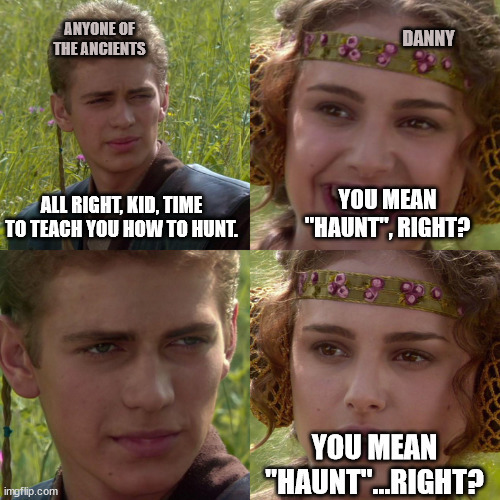
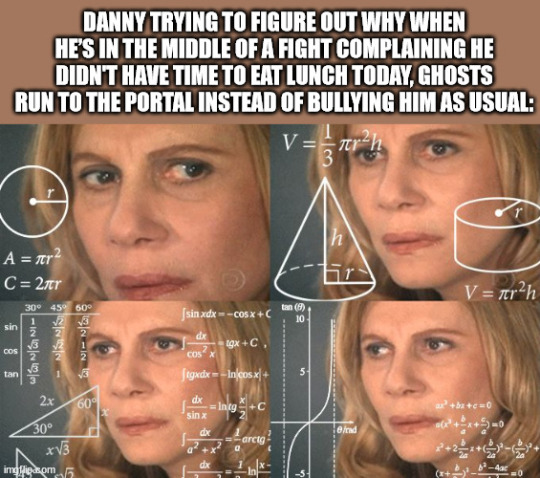
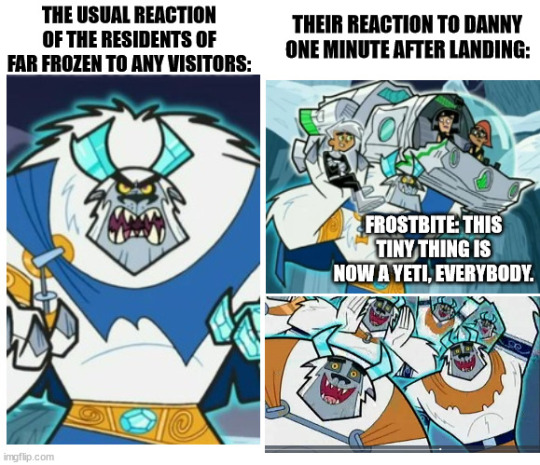
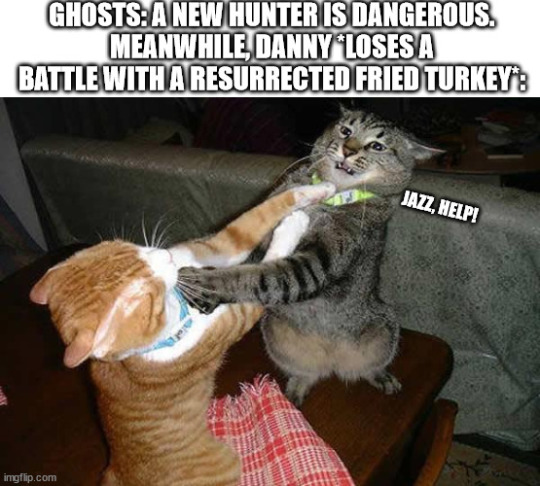
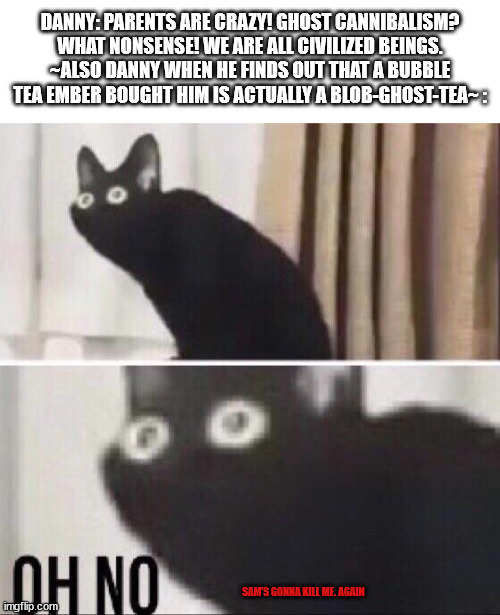
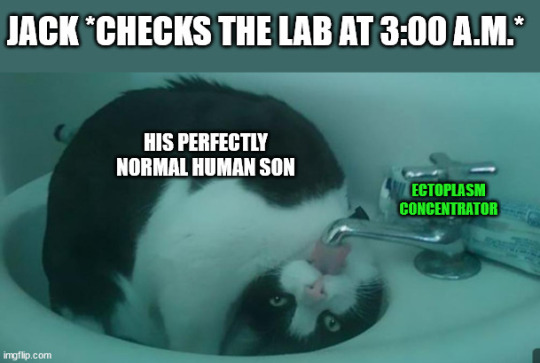
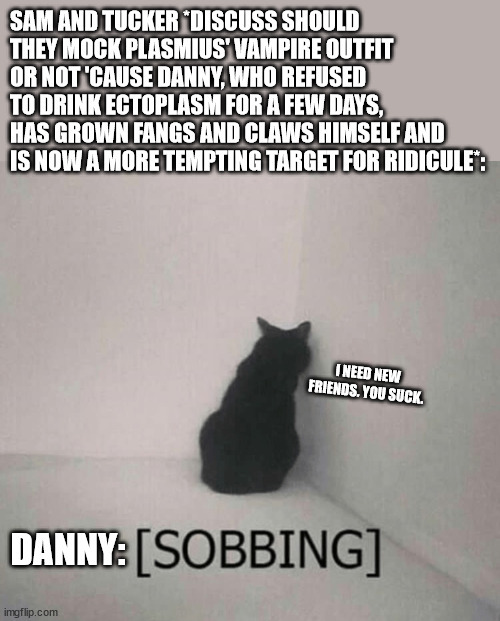
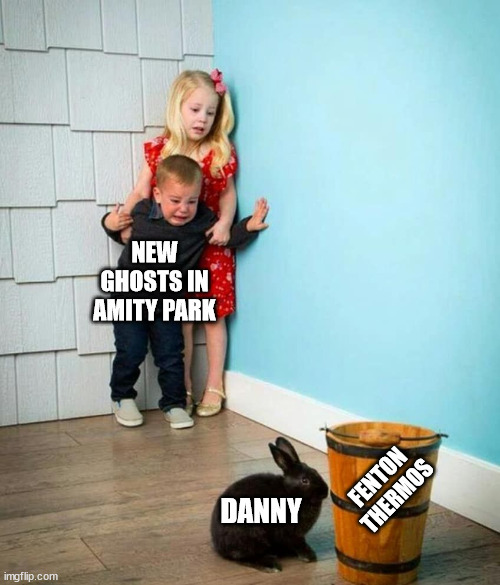
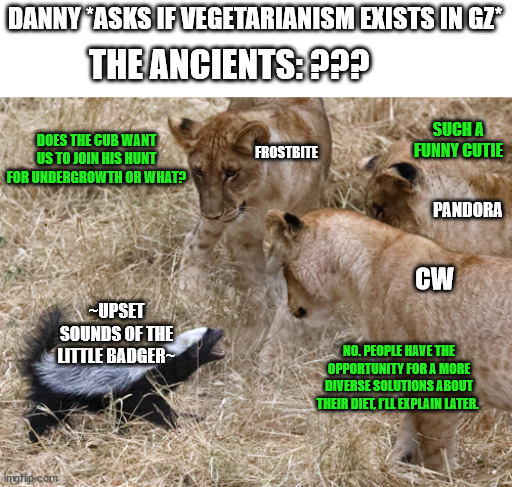
Suppose there’s a conventional division among ghosts. Some of them are potential predators capable of hunting their own kind, while others are only able to absorb the surrounding energy and therefore build up power more slowly than hunters.
So, predation is used as a method of survival in poor ectoplasm areas of the Ghost Zone, less often as a means of gaining power. Even less often hunters are created.
It is obvious that the appearance of a hunter who is the son of human ghost hunters in a haunting place without stable sources of ectolasm has caused panic in the society of the dead ones. For the newly formed ghost to have ectoblasts, fangs or ghost sense is a rarity and great luck. So the newcomer had everything and more to be a serious threat. An awful danger for the surrounding spirits…Right?
But Danny doesn’t know the specifics of his new biology ectology!
Even though he’s a hunter, he’s never had a ghost hunger. Probably because thanks to his parents he has an amazing ectoplasm concentrator in the basement. Soon everyone understands that the boy does not attack first. Those who return through the portal never report any losses at all. He does not bite or attempt to capture cores of other spirits. At first, the ghosts think it's a trap. Smart enough for a beginner. Not everyone has the tenacity to pretend to be an idiot to get close to them. But the Phantom never feeds on them. He’s…safe?
What’s more, Danny seems to think they’re a threat to the city. Which is fun and weird. Normally, there is no competition for feeding using human emotion. But the owner of the lair did not like the smell of fear in the air. Is this ghost broken?
When the ghosts who visit Amity realize that the halfa does not know that he can hunt them, rather than just guard his territory...Well, it explains a lot. Everyone agrees not to explain the situation to the boy so that the city behind the portal remains a relatively safe haven during the during a "hunting season" and other troubles in the Infinite Realms.
~~~~~
The problem arises when Phantom begins exploring the Ghost Zone. What if the other hunters make the boy stop being a freak?
In addition, more experienced ghosts may well attack the careless halfa. And Amity Park under the control of a more predatory spirit would be a terrible outcome. Most dead ones near the portal are used to the fact that the area before Wisconsin is open to travel and migration without the threat of being eaten.
All rational ghosts try to avoid the territory of hunters. If you can’t defend yourself, there’s too much risk of being a free meal. It’s much safer to settle down with spirits with similar energy levels at door clusters. If the hunter does not purposefully show up at your lair, you will have a much better chance of keeping the afterlife.
Those of the Ancients who have won their position and those of them who were created for it have become accustomed to isolation. Although all the Ancients have lost the need to eat 'cause they have absorbed enough energy, legends about their past are still be nightmares for all spirits. Just because they don’t need to eat other ones doesn’t mean they won’t. It is clear that a weaker hunter can also be hunted. No reason to risk.
Therefore, how freely and fearlessly Phantom communicates with Frostbite, Clockwork or Pandora is puzzling. Does he feel threatened at all? The Ancients find this experience refreshing. Lil communication without fear makes them feel sympathy for this youngling. Danny is always glad of their company. And the boy is not afraid to express his opinion. It is strange but...pleasant?
Their minions from time to time complain that they teach a potential enemy but it is very difficult to see a possible rival in Phantom. Danny is always in trouble. The youngster is silly and careless. Like a wet kitten that can’t even make a threatening hiss. So Ancients, to their own surprise, don't mind helping him. Why isn’t his naivety annoying?
For example, Frostbite’s trying to teach Danny hunting and tracking techniques because he thinks the little cub doesn’t know how to be what he supposed to be. Meanwhile Danny sees his attempts as a course of self-defense that he can use against ghosts who try to infiltrate his city.
~~~~~Bonus~~~~~
Some insufficiently powerful ghosts mimic predators to scare away dangerous spirits and protect themselves. Skulker is quite pleased that he managed to deceive halfa:
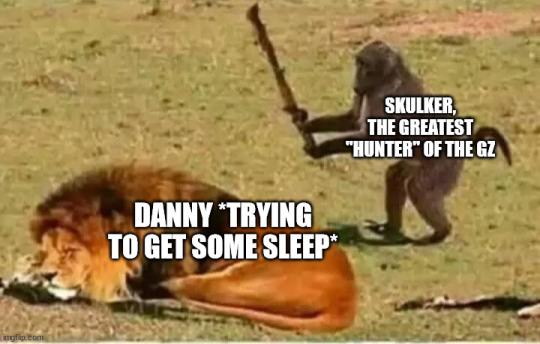
#ectoberhaunt 2023#ectoberhaunt#ectoberhaunt23#EH science#EH magic#Day 5#hunt#haunt#danny phantom#danny fenton#clockwork dp#ancients#frostbite dp#ghost hunger au#dp meme#dp memes#dp prompt#dp headcanons#dp
1K notes
·
View notes
Text
Tcf part 2 chapter 297
WAIT! WAIT! OH MY GOD!
So you're telling me that God of Chaos and God of War have been cooperating since the ancient times, and they were both involved on this whole shitshow since the Ancient White Star wanted to become a god, also followed by now White Star which were both used by the hunters to create an absolute God.
And the reason that GoW chained up Sky Eating Water was because she was too powerful and would have been able to defeat Ancient White Star and totally mess up these two's plan, that's why GoC power was also found at the lake SEW was chained.
Wait oh my god hold on my brain is working at it's full capacity rn-

#YOO RYEO HAN HAS GONE AND DONE IT AGAIN!!!!#oh my god God of chaos has been forshadowed since cale found sky eating power#so much info#so so much info#tcf#trash of the count's family#lcf#lout of the count’s family#tcf novel#tcf part 2#laws of hunting#cale henituse#god of war#tcf god of war#god of chaos#tcf god of chaos#white star#ancient white star#tcf white star#cale barrow
157 notes
·
View notes
Text

i love being an artist bc if my brain demands old men kissing my hands would dive right into it and be done in 40 minutes
#art#ship art#simebarb#barbatos x simeon#simeon x barbatos#obey me simeon#obey me barbatos#caved in. assignments be forgotten. old men yaoi NOW#i don't know how to draw ppl kissing#also i haven't talked about why this ship really gets me.#it's all bcs if the sweet tender fact that these two are ancient beings yet.#they bond over the simplest most domestic things like cooking#and how they could understand eachother and see eye to eye#the fact that the two probably yearn to have someone as old as them#as they could probably understand them better and see through their facade#the walls that they've built for millennia#and here they are#and yet their love is what rouses god's wrath and the violence of the seas#the two eldest in the cast being hunted down by gods and celestial beings simply because they yearn to love and be loved.#damn. sorry guys#only touched the surface though:)
153 notes
·
View notes
Text
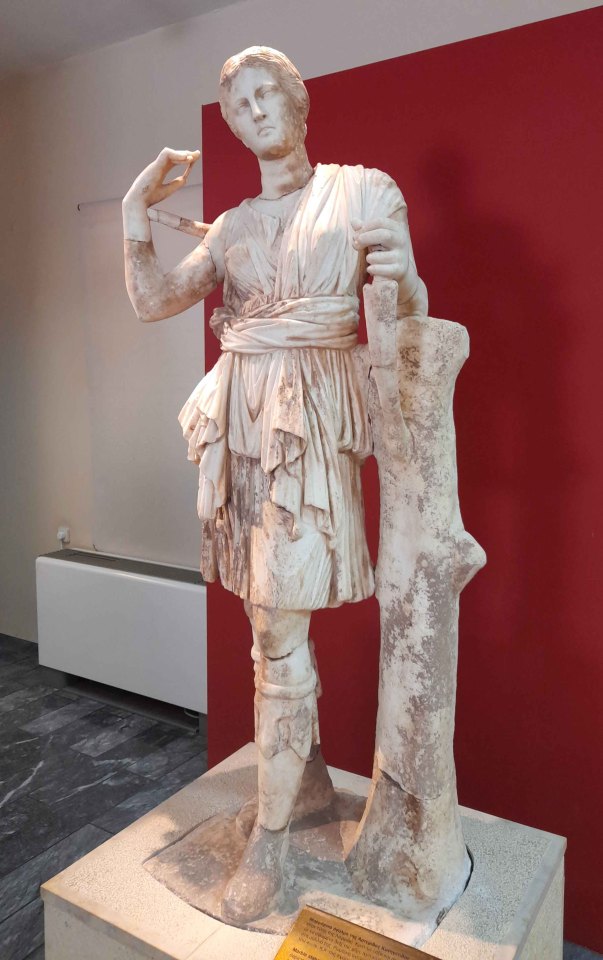
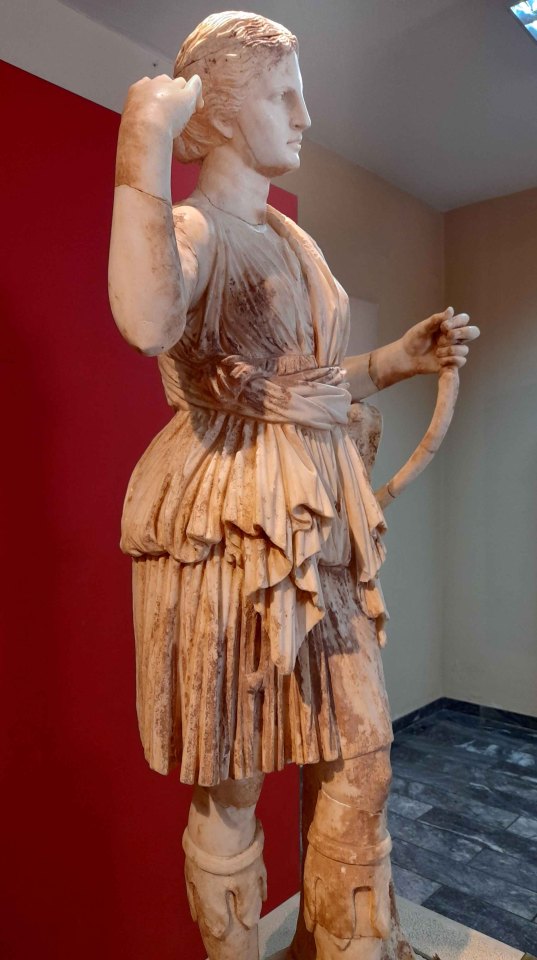

Artemis statue from the archeological museum of Messini, Greece.
#artemis#ancient art#greek mythology#greek goddess#goddess of the hunt#theoi#statue#marble#messini#greece
558 notes
·
View notes
Text
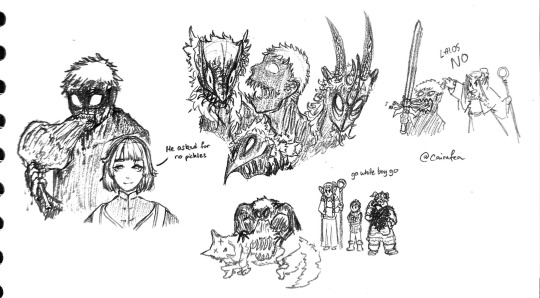
stupid dungeon meshi au where laios is an unexplainable eldritch monster thing that constantly eats anything he can get his hands on. everyone in the party treats him like a slightly disorderly raccoon. everyone outside the party gets a fastpass to heaven from just seeing him.
#people meeting the touden party for the first time: GET YO FUCKIN DOG BITCH#falin: he don't bite :)#to some people he's so incomprehensible that he circles right back around to being some white guy#izutsumi joining and properly seeing laios: you're seeing that thing right. i can't be hallucinating you're seeing this shit too right.#marcille and chilchuck who just see some dude: yea it's just our token male tallman#nothing changes in the first half of dungeon meshi except falin didn't die but laios ate the red dragon and thistle forcibly kicks them out#the second half of the story is everyone desperately trying to hide laios from the canaries#while the man himself wanders off to hunt for winged lion meat#kabru: ok so hear me out. the touden party aren't hiding anything haha no falin's brother goes to another dungeon.#but theoretically if he was in the dungeon right now and he was also an ancient eldritch monster capable of eating the world what would u d#mithrun: ...there's another touden?#the winged lion is fucking terrified of laios. the winged lion does not know if eldritch monsters can eat demons.#the winged lion is about to find out.#finale of this au is a kaiju battle between the demon and laios#laios#laios touden#laios thorden#falin touden#falin thorden#dungeon meshi#delicious in dungeon#dungeon meshi spoilers#my art#fanart#art#doodle#don't repost or your tibia is going in the broth next
181 notes
·
View notes
Text

A typical example of a kulimane hunting dog, a prized animal in Imperial Wardin. They represent the most positive feelings towards dogs in this cultural sphere, an animal that otherwise has an often ambiguous or even disdained status.
Kulimane are the 'hybrid' offspring of domesticated sighthound breeds and the kuliku (colloquially called 'salt wolves'). Kuliku are not actual wolves, but rather the feral descendants of VERY ancient domesticated dogs that have been living wild for millennia in grassland, savannahs, and semi-desert, and are fully functional and efficient predators. Kuliku have slender builds, huge lungs, and long legs, and use bursts of tremendous speed to chase down prey. They mostly take small game, like rabbits, hares, birds, and hippegalga, though pairs are capable of bringing down mid-sized ungulates. They do not readily mate with fully domesticated dogs, but can be encouraged to do so in captivity, thus producing the kulimane.
The production of kulimane was introduced by the third Burri empire and has been fully adopted into contemporary Imperial Wardin. Kulimane are commonly seen as the best and most ideal of hunting dogs, combining the speed, power, and heat resistance and predatory instincts of their wild parents, and the loyalty and tameness, and other bred-in qualities of their sighthound parents. In practice, most Kulimane used in hunting will have been the product of several generations of breeding to produce an ideal animal (initial 'hybrid' generations are often still too wild). Their appearance can vary wildly, but the ideal form for a kulimane is to have a domestic-type coat (fully solid colors are preferred, but rare) and to retain the pointed ears and black tail tip of their wild ancestors.
Most kulimane are independent, intelligent animals that will form close and protective bonds with their handlers, but will be shy and wary of strangers. They usually retain strong territorial instincts from their wild ancestors, and can double as excellent guard dogs. Their disposition towards other dogs can vary- a well socialized kulimane can usually be introduced to new dogs with few issues, but some have striking tendencies to aggression towards strange dogs, and are often muzzled in public. Most are kept in same-sex sibling pairs, and away from unfamiliar or unrelated dogs. They are rarely outright cuddly, often preferring to sit at a distance than to sit on one's lap, but are appreciative of praise and affection from their owners.
Well trained kulimane make for truly excellent sighthounds. They can quickly adapt to changing situations in the field with little to no input from handlers, and quickly and instinctively dispatch most small prey. Their high prey drives Can be a problem for owners. They are frequently known to kill livestock and sacrificial stock, and have a tendency towards surplus killing. You don't want a kulimane to get in with your poultry.
Good kulimane stock is very difficult to produce and takes several generations of breeding, and the animals can be very costly to maintain and keep in good hunting conditions. As such they are VERY expensive animals, and function as status symbols. Sighthounds in of themselves have associations with wealth, and kulimane are specifically associated with royalty and the social elite. They represent the most venerated and beloved end of a very, very wide spectrum of cultural opinions towards dogs in the Imperial Wardi sphere.
The status of dogs in the cultural schema mostly depends on their perceived role. Working dogs tend to have positive cultural connotations- guard dogs and especially hunting dogs are seen as noble animals and symbols of loyalty, and herding and livestock guardian dogs are of great practical value in the rural sphere. Keeping dogs for pure companionship is fairly uncommon, though there are a few established companion breeds in the region. The practice of raising livestock dog breeds has decreased or become obsolete in parts of the region, largely due to Burri influence (which regards the meat of predators and scavengers as wholly unsuitable for consumption), but meat specific breeds like the salutachin are still valued in the city-state of Wardin as providers of an excellent, delicacy meat. The commonality between all valued dogs in Imperial Wardin is their utility, well-established roles, and sharp distinction from feral dogs.
Feral dogs are a fact of life around most settlements. Imperial Wardi cultural outlooks on them tend to be highly negative, characterizing these as uniquely greedy, cowardly, lowly pest animals at best and depraved corpse eaters at worst. Exact attitudes vary throughout the Imperial Wardi cultural sphere, but one near-ubiquitous element is regarding the excrement of feral dogs (and corpses of feral dogs) as potent sources of spiritual pollution that should never be touched with bare skin, and should ideally be removed and buried in barren ground (or their polluting influence should at least be mitigated with a blessing of the tainted location). Superstition holds that stepping in the feces of feral dogs can inflict curses, and the word for 'dogshit' is one of the most insulting terms available in the language.
Hatred of feral dogs is particularly acute in the city-state of Godsmouth. The core city experienced a collective cultural trauma as a result of a siege during the formation of the Wardi empire, in which civilians starved en-masse and descriptions of bodies being eaten in the streets by feral dogs (which were, in turn, eaten by starving civilians) dominate historical records of the event. Feral dogs are by and large hated in this part of the region and seen as outright vile animals and acute sources of spiritual pollution via their very presence. They are actively culled on a routine basis. The outskirts of the city of Godsmouth and some of the city-state's towns have unique practices of allowing semi-tame hyenas free movement through settlements, where they fulfill the dogs' function as refuse cleaners and keep dog populations in check.
While the keeping of feral dogs is generally frowned upon throughout the region, individuals caring for their local feral populations or adopting feral puppies is not unknown, and the distinction between feral and kept dogs (and stigma towards the former) is MUCH less pronounced in many rural communities, where semi-feral dogs may be valued as likable or useful village animals.
No dog breeds are standardized (or even technically 'breeds' in any modern sense), but there is usually great effort to keep working, livestock, and companion dog stocks wholly separate from feral dogs. The word that roughly means ‘mutt’ in this language does not refer to mixed dog breeds as a whole (or even crosses between different types of working dog), but specifically crosses between kept breeds and feral dogs, which is generally regarded as unfavorable (though not uncommon, both due to inevitability in a world without spaying, and practicality- these crosses may produce perfectly good working or companion dogs, and introduction of feral stock reduces inbreeding).
The dog is one of the constellations in the Wardi zodiac, found at the heel of the Hunter constellation and variously interpreted as either being a noble hunting dog trailing its master, or a lowly scavenger looking for scraps. The latter characterization tends to win out in terms of the characterization of its associated birthsign. Being born under the sign of the dog is mostly regarded as inauspicious, and a potential indication of a cowardly, stupid, lustful, and greedy character (though some positive qualities are ascribed, chiefly loyalty).
‘Chinops’ (literally ‘dog-born’) refers neutrally to the dog birth sign, while ‘chinmachen’ (‘dog-faced’) is an epithet given to those considered to have the associated personality traits, which is rarely anything BUT an insult. (These also spawn the purely derogatory phrases of ‘chisnops’, ‘chismachen’, and ‘chismache’, which have functional meanings closest to ‘son of a bitch’ ‘bitch/slut’ and ‘cunt’ respectively)
#GET EXCITED:::: DOG PARAGRAPHS#That linked post is a little outdated but the info is broadly still correct.#The domestication of dogs in this setting was a MUCH more ancient event than irl and their spread has produced#dog populations that are fully naturalized predators and can't really be considered feral on anything more than a technicality.#Janeys and Faiza each own a pair of kulimane. Janeys doesn't even like them but keeps them anyway for hunting.#Faiza IS fond of dogs and has an affinity for even feral dogs (which would be considered unusual but is sometimes interpreted as#having an exceptionally charitable nature- ie you care even for the lowest of the low of beasts)#This is a tangent but the 'mane' in Haidamane is the same root as in kulimane.#Haidamane is a Titen surname and 'mane' is a word in the Burri language (used in Bur/Titen/Kosov)#'-mane' is used to describe things that pertain to 'noble' hunting so will be used in words for appreciated predatory animals and#hunting breeds and is used in the name of a Burri hunting deity. It's not specific to this dog.#Also in case anyone is reading 'mane' as like 'a horse's mane' it's supposed to be pronounced 'mah-ney'. Like 'high- deh- mah - ney'#creatures#imperial wardin
295 notes
·
View notes
